Buckingham Palace, located in Central London, is an iconic neoclassical architectural landmark with a history. Originally built in 1703 as Buckingham House, it underwent significant transformations, including major renovations in 1825 under architect John Nash. The palace’s neoclassical features, such as symmetry, columns, and decorative elements, reflect the architectural style prevalent during its expansion. It is constructed with limestone, brick, and stucco, Buckingham Palace faces challenges in preserving its complex structural elements, including a historic roof. Ongoing maintenance, safety inspections, and a 10-year reservicing program aim to address aging infrastructure, ensuring environmental sustainability and visitor experience improvements. The palace was designed by William Winde and John Nash, and later architects like Edward Blore, the palace showcases historical design influences ranging from neoclassical to baroque and rococo. Its iconic status has influenced other London buildings, setting grandeur and decorative detailing standards. Buckingham Palace has served as the British monarch’s London residence and administrative headquarters since 1837. Its design emphasizes ceremonial spaces, such as the State Rooms, adorned with opulent styles. The ongoing restoration, a $445 (€407, £369) million program, addresses outdated systems and aims to modernize infrastructure while preserving historical details. Architects visiting Buckingham Palace can join Exclusive Guided Tours, delving into its architectural evolution, historical significance, and structural renovations. Key lessons for architects include adaptability, neoclassical design principles, integration of green spaces, and technological innovation. For architecture enthusiasts exploring London, landmarks like 30 St Mary Axe, Tate Modern Extension, Lloyd’s Building, Barbican Estate, and Westminster Abbey offer diverse architectural styles and historical significance.
What is Buckingham Palace?
Buckingham Palace is located in SW1A 1AA, the City of Westminster, Central London, United Kingdom. It was originally built in 1703 as Buckingham House by English architect John Fitch under commission from John Sheffield, 1st Duke of Buckingham. The original building was a large townhouse with three floors and two smaller flanking wings. In 1761, King George III purchased the house for his wife, Queen Charlotte, as a private family residence, which became known as The Queen’s House. Major remodeling and expansion of the building into a palace began in 1825 under the direction of King George IV. He appointed architect John Nash to enlarge the central block and completely rebuild the two eastern wings into a large U-shaped structure. The interiors featured a new Renaissance-inspired white and gold decorative scheme. Work continued under architect Edward Blore after Nash was dismissed. The final façade overlooking the Mall, featuring the iconic balcony, was completed in 1913 by Sir Aston Webb. Queen Victoria took residence in 1837, and Buckingham Palace officially became the principal royal London residence. Today, Buckingham Palace occupies an area of about 39 acres and contains 775 rooms, including 188 staff bedrooms, 92 offices, 78 bathrooms, 52 royal and guest bedrooms, and 19 State Rooms used for official functions and receptions. The State Rooms are elaborately decorated with paintings from the Royal Collection, showcasing the British monarchy’s wealth and power.
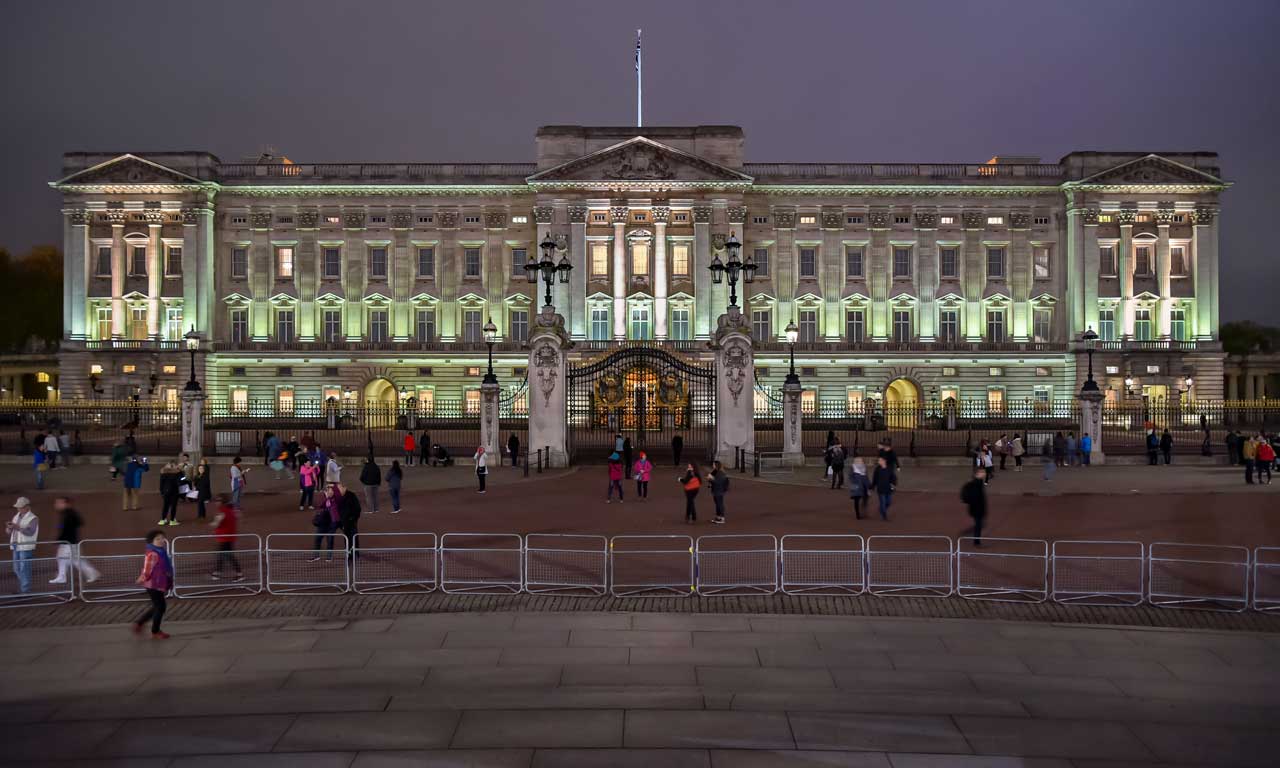
What architectural style is most prominent in Buckingham Palace?
Buckingham Palace represents the neoclassical architectural style. The palace was a large townhouse designed by William Winde in the Baroque style. Major remodeling began in 1825 under the direction of architect John Nash, intending to enlarge the structure into a grand royal palace. Nash’s design exemplified the neoclassical architectural style, which drew inspiration from ancient Greek and Roman architecture. Key features include the symmetry of the façade, the use of columns and pediments, and decorative elements such as bas-reliefs and statues. The exterior façade that Nash created features bathstone in the French neoclassical style preferred by King George IV at the time. Later architects such as Edward Blore continued to work on Buckingham Palace through the 19th century but maintained Nash’s original neoclassical vision. Though there have been some 20th-century additions, such as the East front facade in Portland stone added in 1913, most of the palace today remains true to the neoclassical aesthetic first put in place by Nash in the 1820s. The prominence of columns, triangular pediments, domes, and other neoclassical elements reflect this consistent architectural influence over the past two centuries of the palace’s evolution.
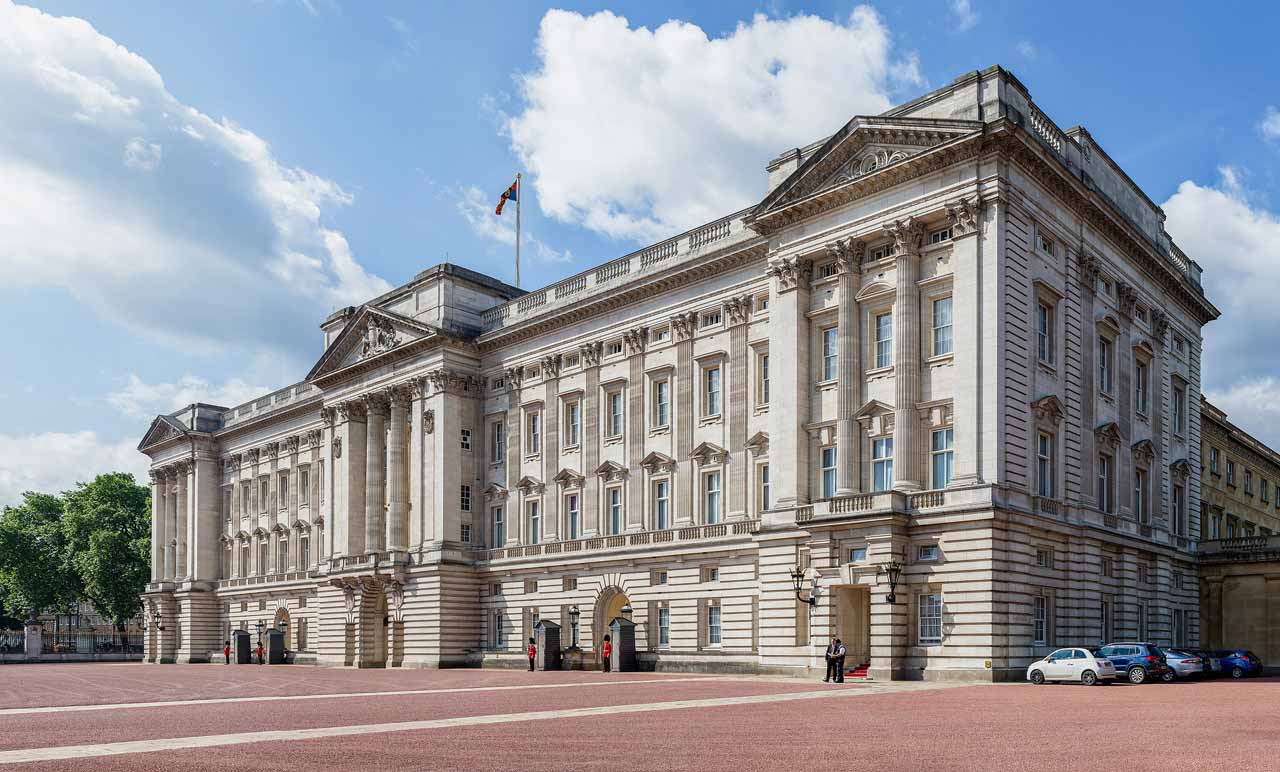
What structural engineering principles are employed in the construction of Buckingham Palace?
There are several structural engineering principles that ensure Buckingham Palace’s stability and durability. Firstly, a foundational aspect is the use of load-bearing walls. These walls are critical for supporting the weight of the building, effectively distributing the load from the roof and upper floors down to the foundation. This is particularly important in a structure as significant and historic as Buckingham Palace. Secondly, the foundations of the palace play a vital role. They are designed to support the structure’s weight and are likely deep and robust, ensuring the building’s stability over time. Thirdly, arches and beams are prominent in the palace’s construction. Arches, often used in doorways and windows, help distribute weight evenly, while beams are essential for supporting ceilings and floors. This combination of arches and beams contributes significantly to the structural integrity of the building. Fourthly, the symmetrical design of Buckingham Palace is not only pleasing but also plays a structural role. This symmetry helps in evenly distributing weight and stress across the building, which is crucial for maintaining the stability of such a large structure. Finally, the roofing structure, including trusses and other elements, is designed to distribute the roof’s weight across the walls evenly. This is particularly important in large and historic buildings like Buckingham Palace, where the top can be a significant source of weight and stress.
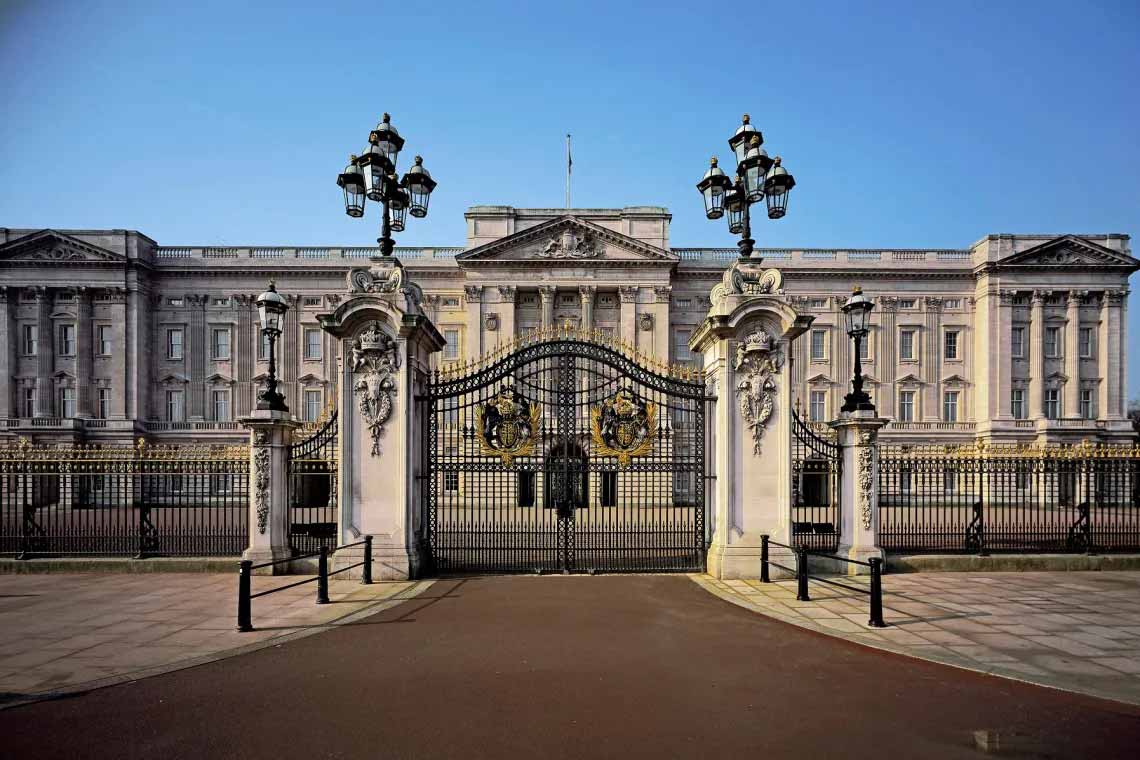
Who designed Buckingham Palace?
Buckingham Palace was designed by architect William Winde in the Baroque style, featuring a large central block with two smaller wings. In 1820, George IV wanted to transform his mother’s house into an imposing royal palace. He appointed his Official Architect of Woods and Forests, John Nash, to oversee renovations and expansion. Nash had established himself as a leading architect of the Regency era, favoring the Neoclassical style. He extended the central block and rebuilt the two side wings, enlarging the U-shaped structure into a much grander building suited for royal ceremonies and functions. Nash’s reconstruction cost far more than budgeted. After George IV died in 1830, Nash was dismissed for overspending. The new King William IV appointed Edward Blore to finish the work. Blore added an extra floor, embellished Nash’s east façade design, created a new southern entrance, and completed the iconic public face of Buckingham Palace by 1837. The interiors were also transformed under Nash and later architects to match the exterior’s grandeur. Nash’s student James Pennethorne contributed opulent Baroque and Rococo-inspired rooms. The current Throne Room and Picture Gallery date to the 20th-century renovations by Sir Aston Webb during King Edward VII’s reign. Ongoing repairs and upgrades aim to preserve the 775-room palace for future generations.
What are the historical design influences visible in Buckingham Palace?
Buckingham Palace influences historical designs with neoclassical, baroque, and rococo. Originally constructed in 1703 as a large townhouse for the Duke of Buckingham, the property was acquired by King George III in 1761 as a private royal residence. Major expansion and redesign of the palace began in the 1820s under the direction of architect John Nash. Nash embraced a French neoclassical style favored by King George IV, evident in the palace’s imposing facade with intricate stonework, columns, and grand arches. However, costs escalated rapidly, leading to Nash’s dismissal. His successor, Edward Blore, retained the neoclassical external façade but focused on interior design with opulent baroque and rococo features. These ornate styles dominate spaces like the Throne Room and Picture Gallery, resplendent with antiques, art, and decadent finishes in bold colors and gilded accents. Successive monarchs and architects continued to leave their imprint through minor modifications and technological enhancements, but the palace’s core 18th and 19th-century architectural details remain intact as emblems of British history and sovereignty. The synthesis of design influences across various eras is considered an elegant expression of national heritage.
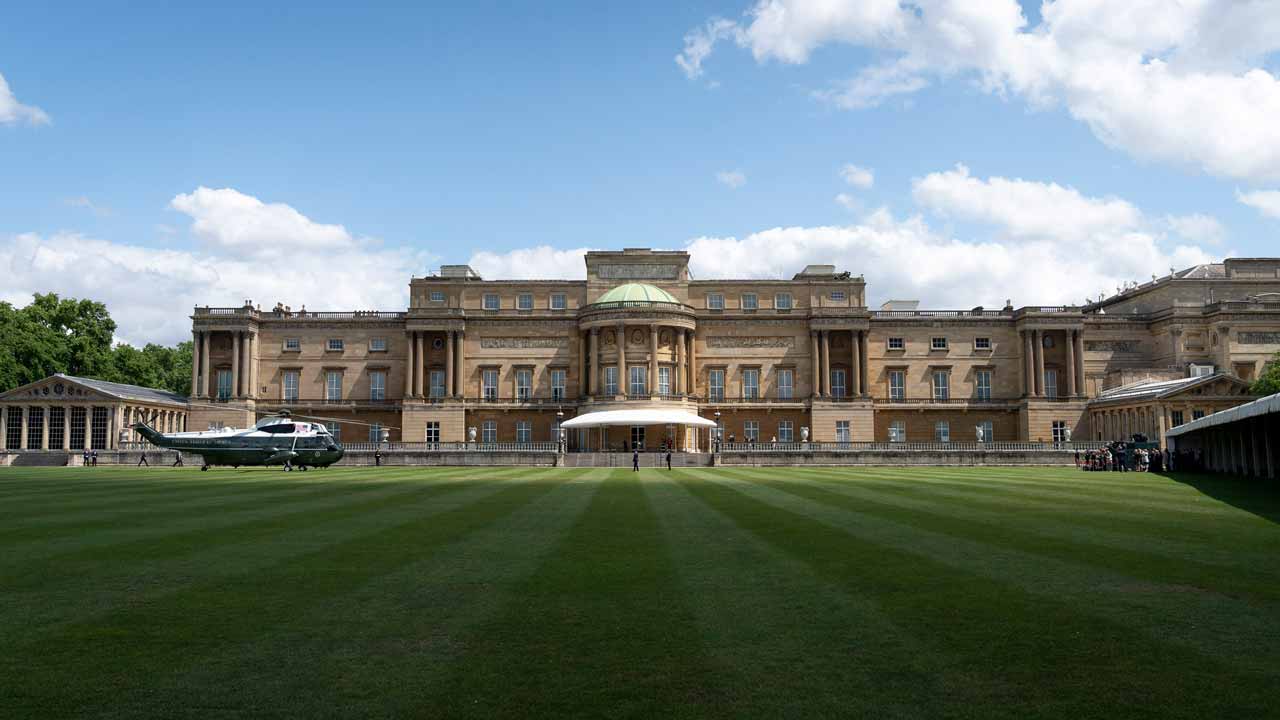
How has Buckingham Palace influenced the design of other buildings in London?
Buckingham Palace has influenced the design of other buildings in London in several key ways. Firstly, the palace set a precedent for using stone as a primary building material. Many landmark buildings across London emulate Buckingham Palace’s Portland and Caen stone facade, aiming to achieve its grandeur and neoclassical aesthetic. This is evident in structures like the British Museum, National Gallery, and Admiralty Arch. Secondly, the decorative elements of Buckingham Palace sparked a trend of elaborate detailing on the facades and interiors of other notable London buildings. Intricate moldings, bas-reliefs, columns, and cornices define spaces like the Royal Albert Hall, St Pancras Renaissance Hotel, and the Palace of Westminster. The renowned East Front facade introduced in 1913 inspires the front-facing designs of other institutions. Its iconic balcony and Portland stone facade set a standard that buildings like the BBC Broadcasting House and Royal Festival Hall emulate in their imposing, symmetrical street presence. Lastly, Buckingham Palace shapes the perception of prestige in British architecture. Other structures that host cultural events or house institutions hope to capture this spirit of civic importance in their designs’ grandeur and bold classicism. Buckingham Palace has directly influenced what defines landmark and cultural architecture in London across the decades.
What purpose does Buckingham Palace serve and how does the design help?
Buckingham Palace has been the British monarch’s London residence and administrative headquarters since 1837. Its purpose is to provide a setting for important state occasions, royal hospitality, and ceremonies. The palace’s design reflects this ceremonial function through its neoclassical facade and interiors. The staterooms are the most essential spaces for entertaining guests and dignitaries. Nash designed them in ornate styles like baroque and rococo, using materials like gilded detailing, Sèvres porcelain, silk wallcoverings, and crystal chandeliers. The Throne Room, Picture Gallery, Music Room, and Ballroom are among the highlights. The Grand Staircase makes a suitably grand entrance to these rooms. In total, there are 19 state rooms used for ceremonies and receptions attended by royalty, heads of state, and other VIPs. In addition to interior grandeur, the palace has the largest private garden in London at 39 acres. It provides the setting for the royal family’s annual garden parties. Other amenities include a swimming pool, post office, doctor’s office, movie theater, and police station, allowing the palace to function as a small town catering to the royal family’s needs. So in both its architecture and facilities, Buckingham Palace is designed to serve as a fitting residence, office, and entertainment venue for Britain’s monarch to conduct state business and host guests in style and luxury.
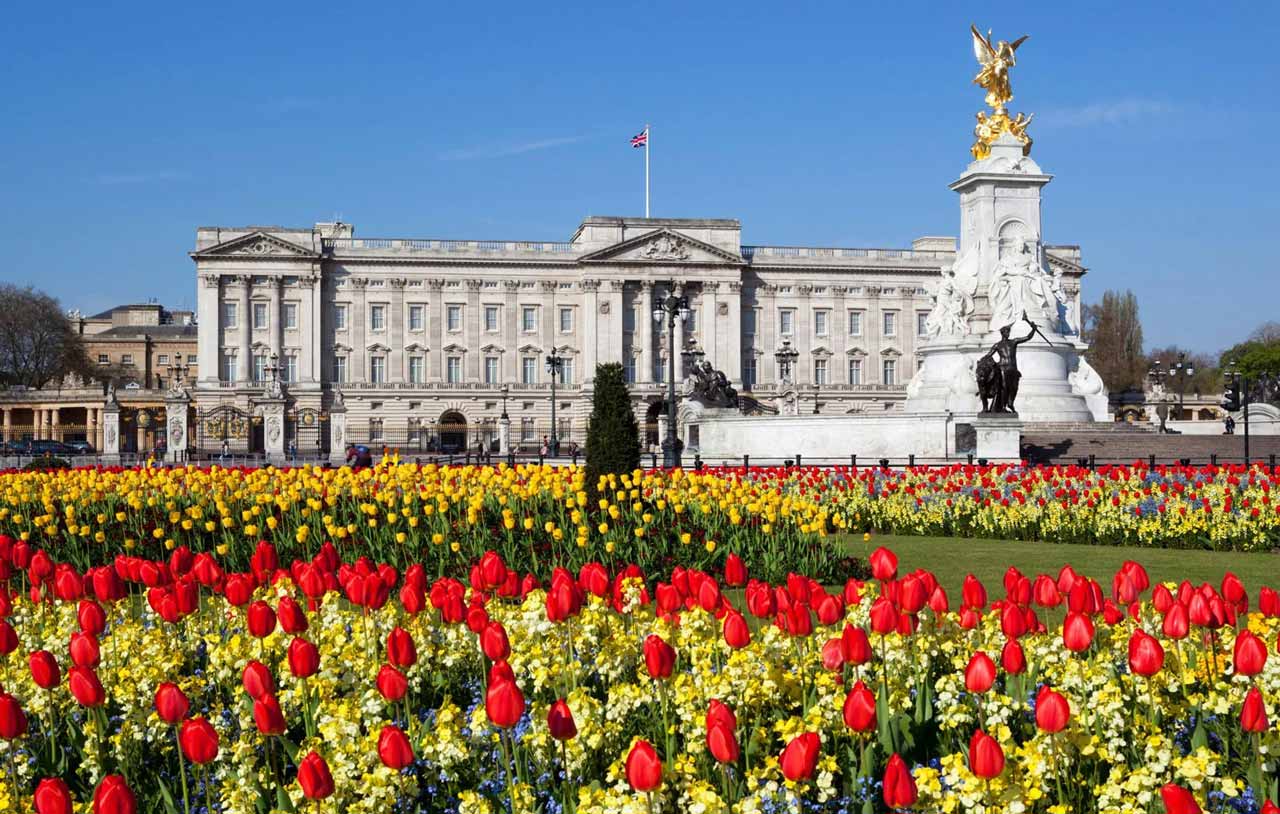
How is Buckingham Palace maintained?
Buckingham Palace undergoes regular maintenance and renovations to preserve the building and enable it to function effectively as the monarch’s residence and administrative headquarters. However, the infrastructure had not seen significant upgrades since the 1950s, prompting a 10-year, $460 million (€430 million, £369 million) resurfacing program that began in 2017. The reservicing replaces outdated systems, including electrical wiring, heating, plumbing, drainage, and IT networks. Many were near or beyond their recommended service life, posing fire, flood, and operational risks. The project takes a phased, wing-by-wing approach to allow partial palace occupancy and access for visitors. Specialist art handlers decanted over 3,000 artifacts from the East Wing before infrastructure upgrades began there. An “army” of over 800 staff keep the palace clean and dust-free through sweeping rather than vacuuming to avoid noise pollution. The 42-acre garden is tended by horticulturalists who recycle green waste as a natural fertilizer. The reservicing project is on track for completion in 2027. The palace remains actively used for royal business and events in the interim period. The 2022 Platinum Jubilee celebrations provided an early showcase of the upgraded facilities. Modern infrastructure will support the palace, enabling it to function effectively as a working royal residence and remain open to the public for the next 50 years.
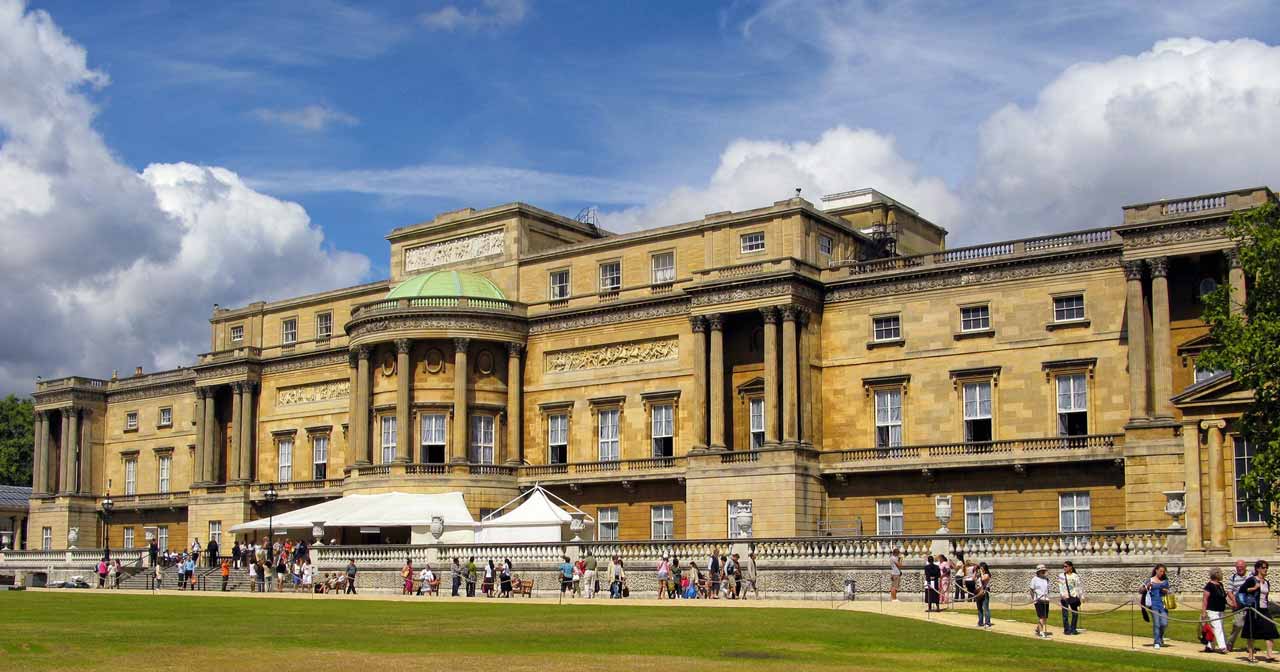
How does Buckingham Palace reflect cultural and contextual relevance in its design?
Buckingham Palace reflects cultural and contextual relevance in its design. In architectural style, the palace’s neoclassical facade was inspired by French chateaux and designed to project regal elegance. Its style reflects the cultural influence of European architecture and Britain’s political ties with France at the time. Inside, Nash incorporated baroque, rococo, and other ornate styles that were fashionable in early 19th-century England. In historical significance, the expansions over time made Buckingham Palace an icon representing the continuity of the British monarchy for over 300 years. It is a living record of shifting architectural tastes from Queen Charlotte to today. Buckingham Palace shapes Britain’s public narrative as a stable, enduring monarchy. It is a globally recognized symbol of tradition that still feels relevant as the backdrop for events like royal weddings. The palace has adapted to stay current. Recent technology upgrades and accessibility improvements help it operate effectively while preserving heritage.
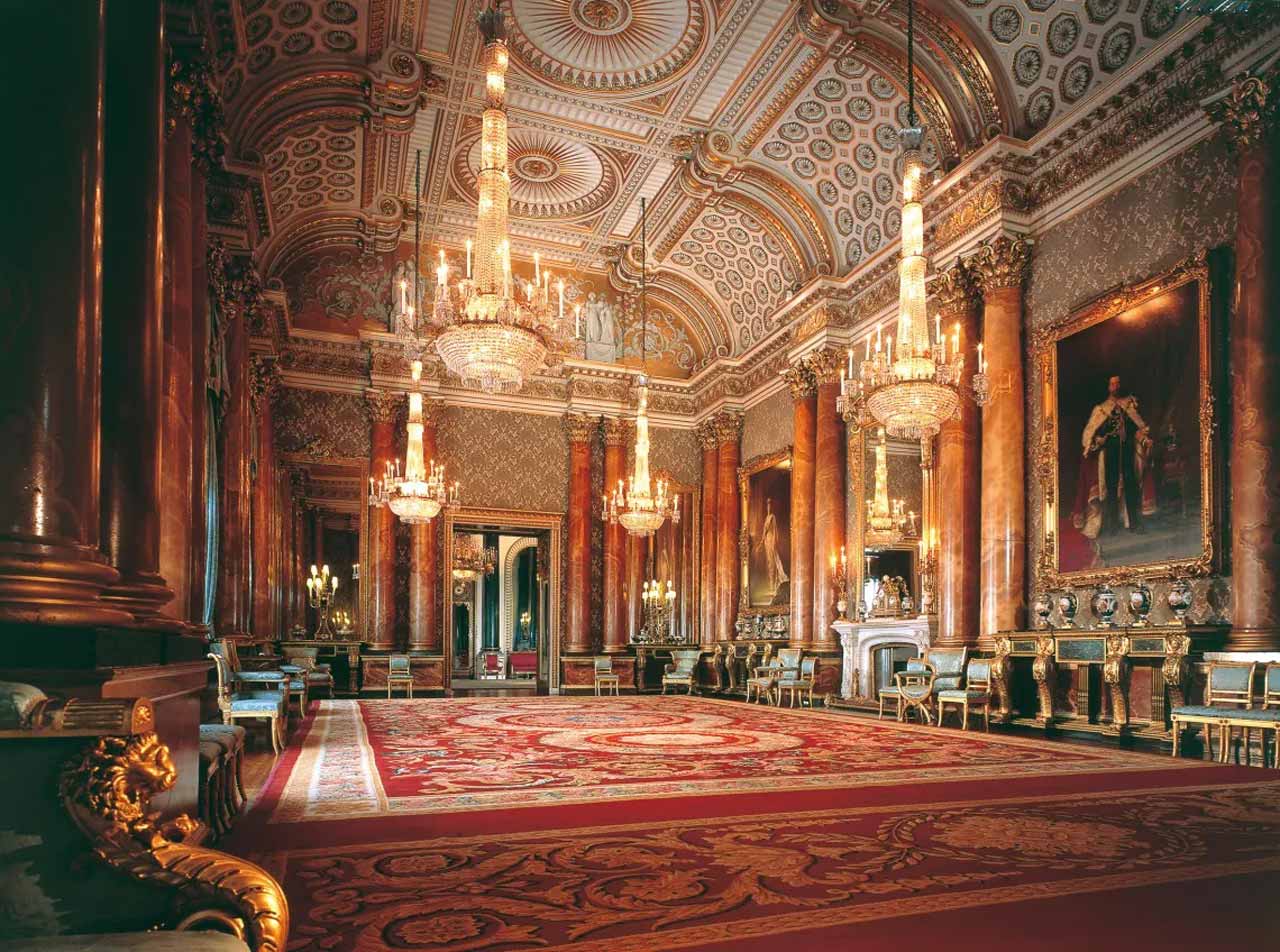
What architectural trend or movement does Buckingham Palace represent?
Buckingham Palace represents the contemporary architectural trend. The palace features neoclassical stylistic elements inspired by ancient Greek and Roman architecture, it has undergone major expansions and renovations into the 19th and 20th centuries to keep up with the evolving architectural innovations and ideas of the times. So contemporary architecture, which incorporates modern technologies and design concepts as they emerge while not adhering to any one historical style, is the overarching architectural trend that Buckingham Palace falls under. The palace encompasses both neoclassical and contemporary elements as it has been upgraded to reflect the prevailing architectural trends.
What are the challenges faced during the restoration of Buckingham Palace?
The ongoing restoration of Buckingham Palace faces several key challenges. Firstly, the safe removal of asbestos spread throughout the building. Given its hazardous nature, asbestos removal necessitates specialized protocols and precautions during demolition, adding complexity to various renovation tasks. Secondly, it revolves around averting imminent catastrophic failures in the electrical, plumbing, and heating systems. Dating back to the 1950s, urgent upgrades are essential to prevent potential disasters such as fires or flooding. The outdated components must be swiftly replaced to mitigate the risk of substantial damage. Thirdly, the massive scale and scope of the renovation, spanning a decade, pose additional difficulties. The project involves carefully coordinating thousands of artifacts being decanted across a phased plan, focusing on core infrastructure and accessibility. Lastly, there is a delicate balance to strike between conservation and transformation. Preserving heritage aspects while executing transformative modernization requires meticulous consideration. The preservation of historical details must be carefully weighed against the installation of new sustainable and efficient building technologies to uphold the functionality of Buckingham Palace during and after the restoration process.
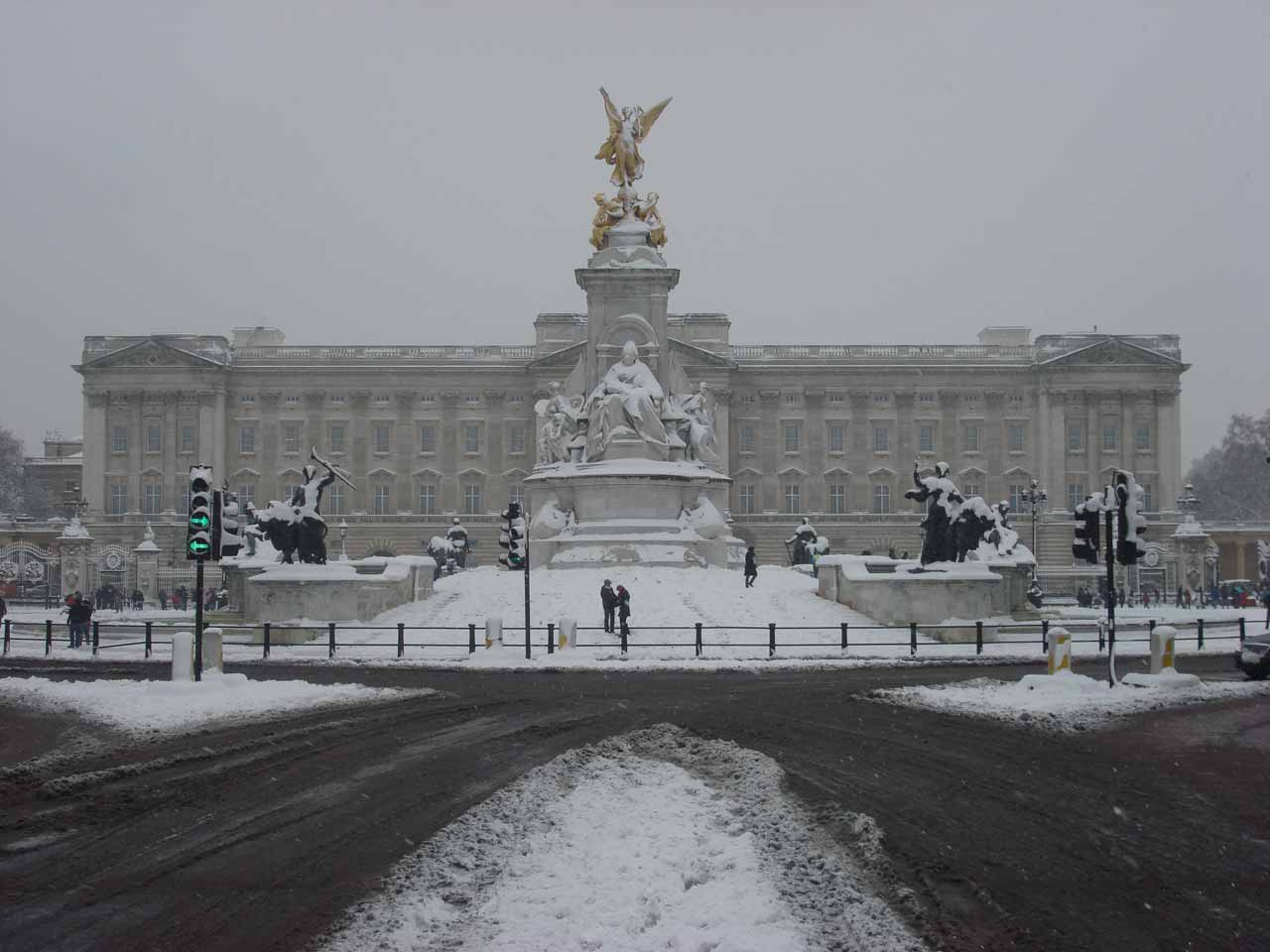
How does Buckingham Palace comply with contemporary safety and accessibility standards?
Buckingham Palace has been strategically focused on enhancing accessibility, with a series of upgrades implemented to facilitate a more inclusive environment. Among these initiatives is adding a golf cart and trailer, specifically designed to transport wheelchair users seamlessly past the gravel driveway and into the Palace, ensuring that individuals with mobility challenges have convenient access. Thick carpets aid in improving navigation for those using mobility devices. In tandem with these accessibility enhancements, Buckingham Palace has implemented a comprehensive infrastructure overhaul through a 10-year phased resurfacing program initiated in 2017. This ambitious program aims to replace outdated critical systems, including electrical, plumbing, heating, and wiring, which have aged over time, posing potential risks of fire and flooding. The improved accessibility measures will accommodate a more diverse range of visitors, including those with disabilities, fostering a welcoming environment for all. Buckingham Palace actively aligns itself with government health guidelines, particularly in the context of COVID-19 safety measures. The adaptability of the Palace to evolving standards is evident, as policies and facilities are continually updated in response to the dynamic landscape of health and safety protocols.
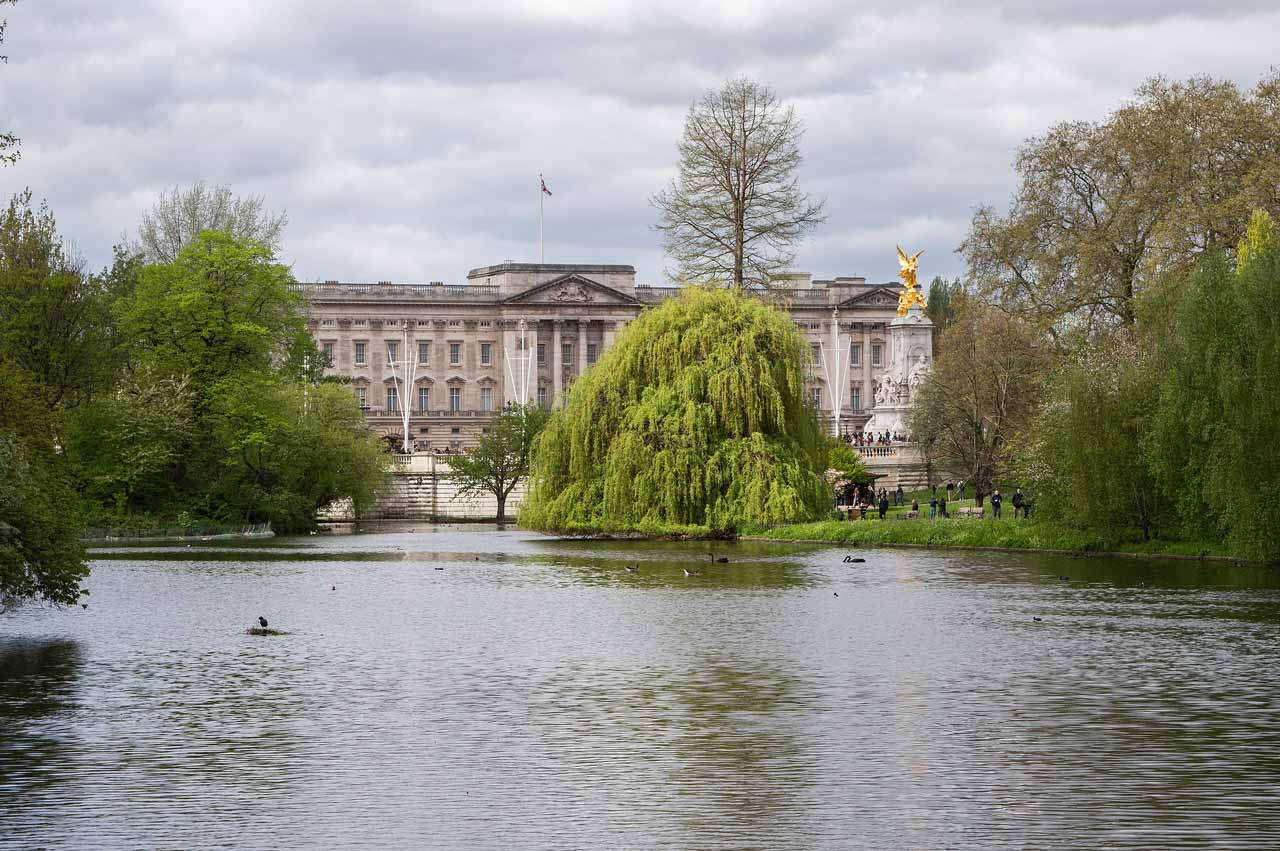
Are there any specific tours for architects or architecture enthusiasts visiting Buckingham Palace?
Yes, there are specific tours for architects and architecture enthusiasts visiting Buckingham Palace. Buckingham Palace offers Exclusive Guided Tours that provide an in-depth look at the architecture and design of the palace. These tours are available in winter and spring when the State Rooms are closed to the general public.
The Exclusive Guided Tours last around 2 hours and 30 minutes and are limited to groups of 30 people. They are led by expert guides who share details on the building’s history, architecture, and renovations over the years. Some key architectural and design elements highlighted on the tours include showcasing the facade Edward Blore designed in 1913, including the iconic balcony where the royal family appears. Tours visit the 19 State Rooms of the palace, explaining how different monarchs shaped their designs over time. Guides chronicle major structural renovations done to the palace over 300 years. This includes discussing destroyed wings, extensions built, and modernizations for heating, electricity, and technology.
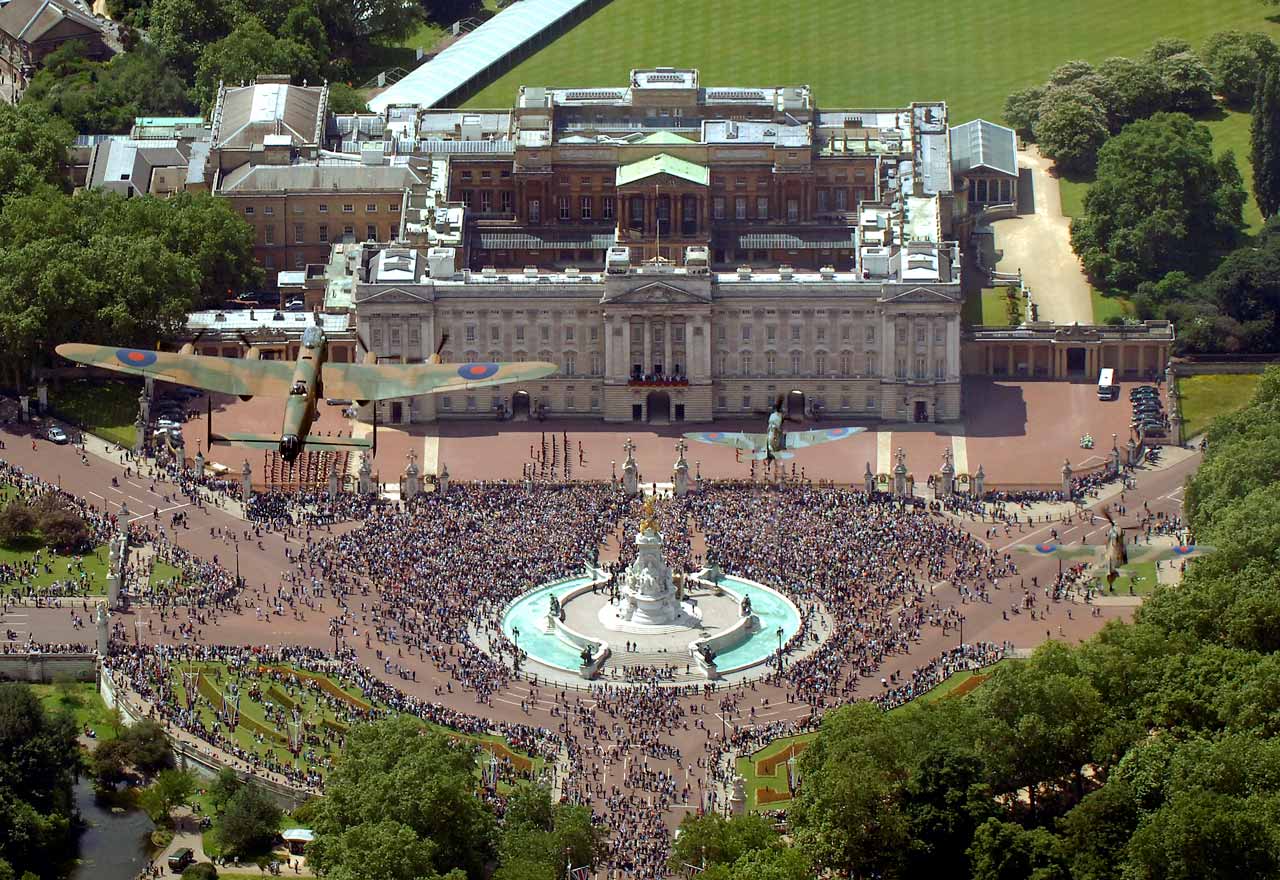
What lessons can architects learn from the design and construction of Buckingham Palace?
Architects can learn several key lessons from the design and construction of Buckingham Palace. Firstly, the importance of adaptability in architectural design. Buckingham Palace has undergone constant renovations and extensions to meet the changing needs of its royal residents over 300 years. Architect John Nash led one of the first major reconstructions in the 1820s, but updates continued into the 20th century. This ability for the structure to transform over time provides a great case study in flexible form and function. Secondly, architects should note the neoclassical influences in the palace’s facade. Classical Greek and Roman elements like columns, pediments, and symmetry have stood the test of time. Even in the 19th century, architect John Nash emulated these styles, giving the palace a monumental, timeless aesthetic. Thirdly, Buckingham Palace was situated to connect with surrounding gardens and parks. The green spaces provide beautiful views and accessibility for the public. This lesson in integrating landscaping is invaluable for architects to increase sustainability and community engagement. Buckingham Palace has been upgraded technologically across the centuries. Architects can look to these improvements as inspiration to design buildings ready for innovation rather than limited to the technology of their time.
What are the best architectural landmarks in London to visit as an architect?
Listed below are the best architectural landmarks in London to visit as an architect.
- The Shard: The Shard is a paradigm of modern skyscraper design and a must-visit for architects in high-rise architecture and sustainability. Designed by Renzo Piano and completed in 2012, it stands as the tallest building in the United Kingdom. The Shard’s glass facade, resembling a shard of glass, demonstrates the innovative use of materials and provides views of London. Its mixed-use design, incorporating offices, residences, and public spaces, represents the concept of a vertical city, making it a key study in contemporary urban architecture.
- The British Museum: The British Museum is pivotal for architects studying the integration of historic structures with modern design. The Great Court, redesigned by Norman Foster and opened in 2000, transformed the museum’s central courtyard into a dynamic, covered public space. The roof, a glass and steel structure, allows natural light to flood the interior. This museum is an example of traditional architecture with contemporary design, demonstrating how modern interventions can enhance historical buildings.
- St Paul’s Cathedral: St Paul’s Cathedral, designed by Sir Christopher Wren, is a landmark for architects interested in classical architecture and its influence on cityscapes. Completed in 1710, its dome is an engineering marvel, influencing church architecture worldwide. The cathedral’s design, embodying the grandeur of the English Baroque style, offers insights into the construction techniques of the time and Wren’s architectural vision. Its presence in London’s skyline makes it a symbol of architectural resilience and innovation.
- 30 St Mary Axe (The Gherkin): 30 St Mary Axe, known as The Gherkin, is a significant visit for architects studying sustainable skyscraper design. Designed by Norman Foster and completed in 2003, its shape and diagrid structure make it stand out in London’s skyline. The building’s eco-friendly features, including natural ventilation systems, represent a shift towards sustainability in urban architecture, making it a model for future skyscraper designs.
- The Royal Pavilion, Brighton: The Royal Pavilion in Brighton is a remarkable example of Indo-Saracenic Revival architecture. Designed by John Nash and completed in 1823, its Indian-inspired design marked a significant departure from traditional British architecture. The Pavilion’s decorated interiors and exteriors showcase a fusion of styles and make it a study of opulent and imaginative design.
- The Tate Modern: The Tate Modern, a masterful example of adaptive reuse, is crucial for architects interested in the transformation of industrial spaces into cultural venues. Herzog & de Meuron’s conversion of the former Bankside Power Station, completed in 2000, maintains the industrial essence while introducing contemporary elements. The Tate Modern represents how architectural innovation can repurpose existing structures, offering a new life and function, which is increasingly relevant in urban development.
- The Lloyd’s Building: The Lloyd’s Building is a must-visit for architects interested in this architectural movement. Designed by Richard Rogers and completed in 1986, its external services and modular, prefabricated construction challenge conventional architectural norms. The building’s futuristic design and functional aesthetics have made it a symbol of innovation in commercial architecture.
- Westminster Palace and Big Ben: Westminster Palace, particularly the iconic Big Ben, is a fundamental site for architects studying Gothic Revival architecture. Reconstructed by Charles Barry and Augustus Pugin after a fire in 1834 represents a revival of the Gothic style adapted for a modern legislature. The complex’s stonework, pointed arches, and detailed ornamentation offer insights into 19th-century design and craftsmanship, making it a key example of historicist architecture in a political context.


